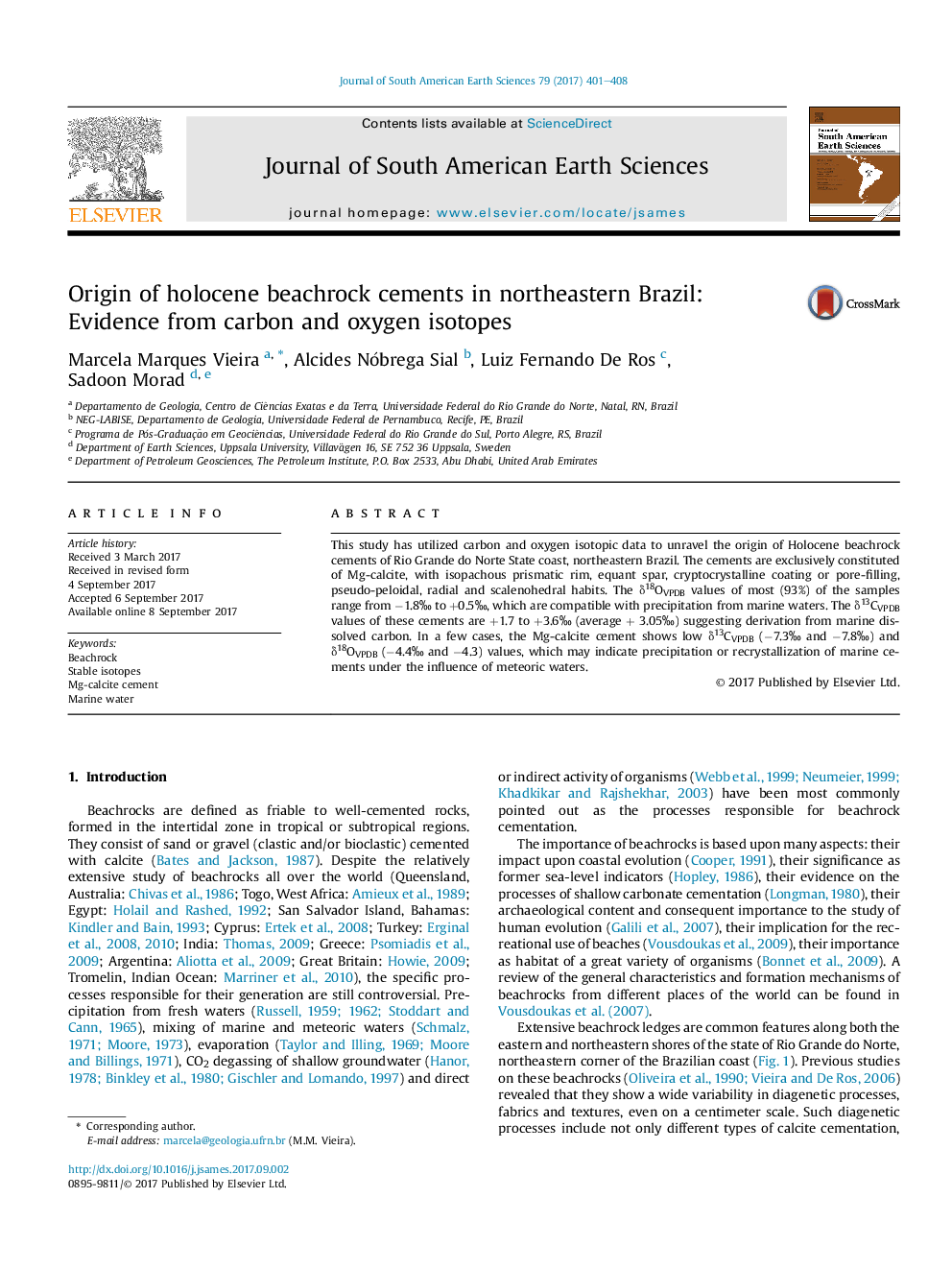| Article ID | Journal | Published Year | Pages | File Type |
|---|---|---|---|---|
| 5780415 | Journal of South American Earth Sciences | 2017 | 8 Pages |
Abstract
This study has utilized carbon and oxygen isotopic data to unravel the origin of Holocene beachrock cements of Rio Grande do Norte State coast, northeastern Brazil. The cements are exclusively constituted of Mg-calcite, with isopachous prismatic rim, equant spar, cryptocrystalline coating or pore-filling, pseudo-peloidal, radial and scalenohedral habits. The δ18OVPDB values of most (93%) of the samples range from â1.8â° to +0.5â°, which are compatible with precipitation from marine waters. The δ13CVPDB values of these cements are +1.7 to +3.6â° (average + 3.05â°) suggesting derivation from marine dissolved carbon. In a few cases, the Mg-calcite cement shows low δ13CVPDB (â7.3â° and â7.8â°) and δ18OVPDB (â4.4â° and â4.3) values, which may indicate precipitation or recrystallization of marine cements under the influence of meteoric waters.
Keywords
Related Topics
Physical Sciences and Engineering
Earth and Planetary Sciences
Earth and Planetary Sciences (General)
Authors
Marcela Marques Vieira, Alcides Nóbrega Sial, Luiz Fernando De Ros, Sadoon Morad,
